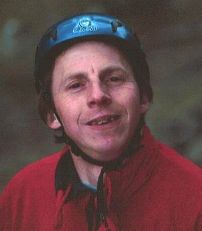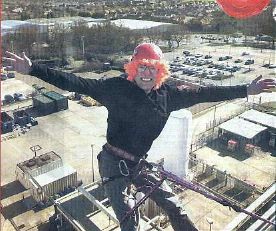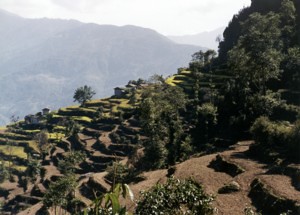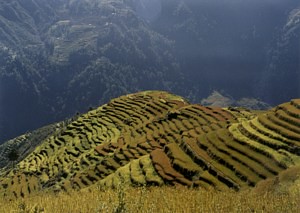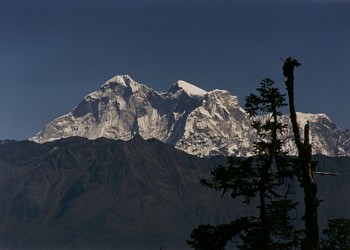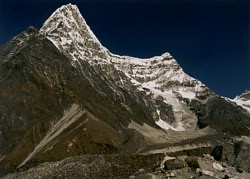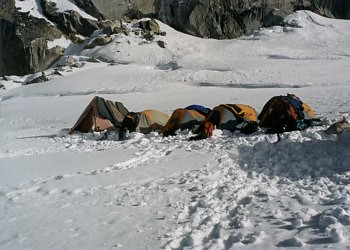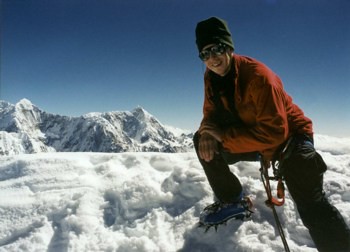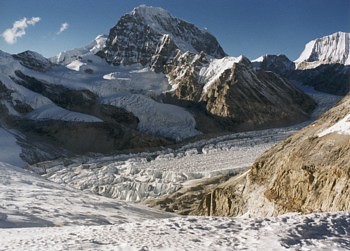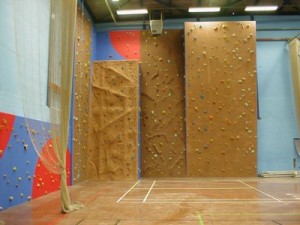For those not into mountain biking, Coed-y-Brenin is a few miles north
of Dolgellau and is something of a mountain biking mecca. Forest
Enterprise have gone to great lengths to build a series of man-made
trials of various lengths, ascent and difficulty. Good use is made of
the forest roads, interspersed with man-made singletrack. Amongst the
plus points are that it is all rideable, although some of it takes a
little nerve, there is little in the way of standing water and none of
the deep, gloopy mud found on natural trails. The downside is that
much of the riding is very intense, being either up, down and very
technical. And, sometimes, all at the same time! On top of that, the
start of every ride is an uphill slog from the carpark.
The general plan was for myself and Steve to travel up to Dolgellau on
the Friday evening, where we’d meet up with my friend Matthew and his
family. All three of us would ride on the Saturday before Matthew went
off to do family things on the Sunday.
Saturday morning saw Matthew on family duty so Steve and I headed for
the Karrimor trail, 23 miles long and a silly number of feet of
ascent. It all started well enough but a few miles in on a long
stretch of rocky, twisting and rooty singletrack, a moment’s
inattention saw the front wheel stop dead on a rock. The next thing I
know, I’m on the ground – the first thing I’m aware of is a pain from
my lower back, then my right knee where I seem to have landed on it.
Then I notice that I’m seeing stars. Hmm, must have been going faster
than I thought. After a few minutes contemplation, a bit of cursing
and getting my self together, I’m back on the bike and pedalling
furiously to try and catch Steve.
Fortunately there were no more comedy dismounts but much of the detail
of the rest of the route passed me by. However, I do recall lots of
technical singletrack and much forest road slogging, mainly uphill.
And did it rain! After perhaps 2 hours, the heavens opened.
Waterproofs were swiftly donned but we still got a good soaking,
despite heading for the cafe with all possible speed.
A couple of cups of tea and some cheese on toast later, the world is
looking rosier and I’m up for going out again, despite the incessant
rain. Well, there seems little point in travelling all that way to
spend too much time in the cafe. Steve had a slightly different
perspective. Without as much recent riding under his belt, he was all
for staying put.
This time, I’m out on the Red Bull trail. Can you guess who sponsors
it? The Red Bull is the shortest of all the routes but as I rode
round, some of my enthusiasm seemed to have left me. Thoughts along
the lines of ‘if I keep going here, I can avoid that particularly
nasty bit of singletrack’ entered my head a few times. Determination,
though, kept me going and I cleaned sections where I’d previously
fallen or walked. There’s still plenty of uphill slogging but I just
flowed through the final miles.
The best bit of the Red Bull, though, comes right at the end where it
takes in a dual descender course. What’s that, I hear you ask. As the
name suggest, dual descender involves two riders simultaneously on the
course. The corners are built up with berms (banks) so it’s possible
to carry plenty of speed through them. Between the corners are jumps
so the overall effect is belting round the corner on the berm before
hitting the jump then trying to get into position for the next berm.
It feels much faster than it really is but provides a great sensation
and I defy anyway not to be grinning like a Cheshire cat at the end of
it.
More tea and cake followed (I think it’s good to put money into the
local economy) before retuning to Dolgellau.
Sunday couldn’t have started more differently. Bright and sunny with
barely a hint of wind and certainly no rain in the air. We set off on
the MBR route, another fine combination of forest road and
singletrack. It doesn’t take too long for yours truly to fall off
again. Right at the end of a smooth and fast section of singletrack, I
take a corner too fast. The front wheel goes wide and washes out on
the loose gravel at the edge. Rapidly loosing speed, I drop the bike
landing on elbow and hip. Ouch!
The rest of the route is more of the same and in seemingly no time at
all we’re back at the cafe. Fed and watered again, Steve and Matthew
are up for another route and head off for the Red Bull. I decline the
opportunity to join them; after nearly fifty miles and a couple of
falls, my legs are hollow and my back very stiff.
The overall verdict? No doubt I’ll go again but I won’t be bothered if
it isn’t for a few years. Steve’s view was a bit different – been
there, seen it, done it, don’t need to do it again. Was it worth the
effort? Now that the cuts and bruises have disappeared and with a
couple of weeks reflection the answer is yes but in the days
immediately afterwards I was all for giving up mountain biking because
it’s just too damn hard! Watch this space for news of a full
suspension bike ……

